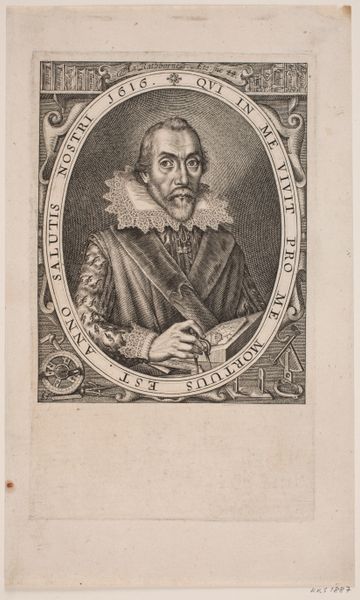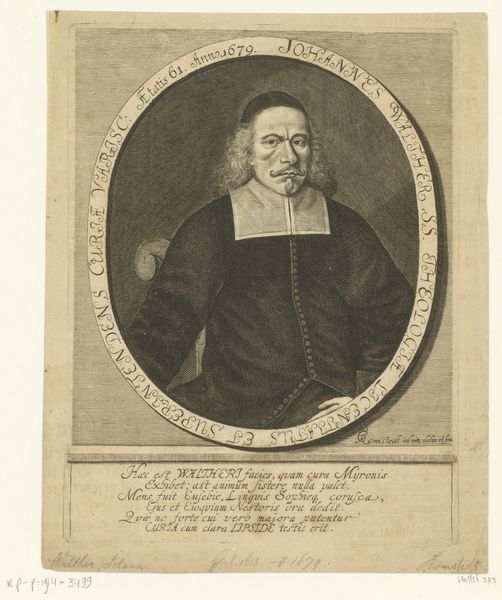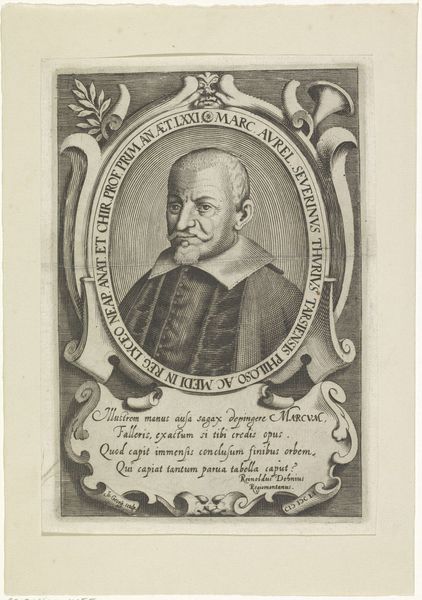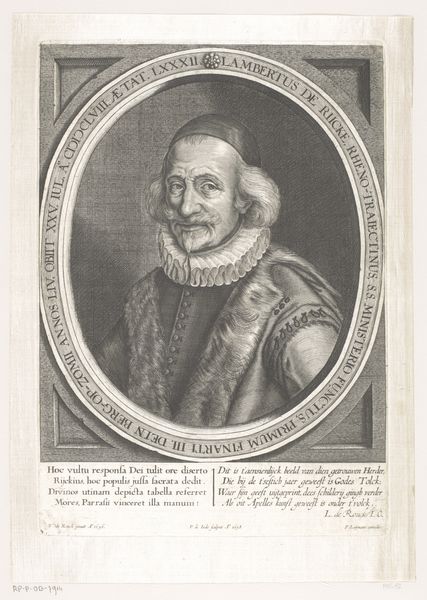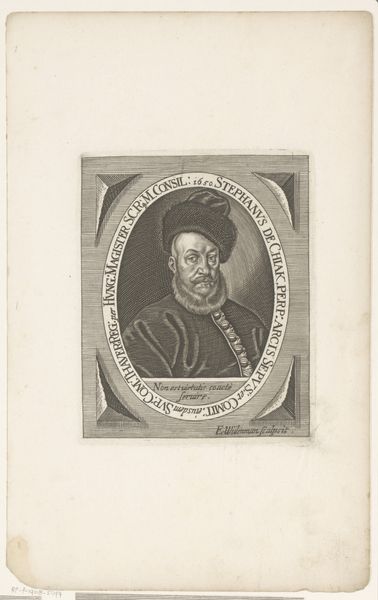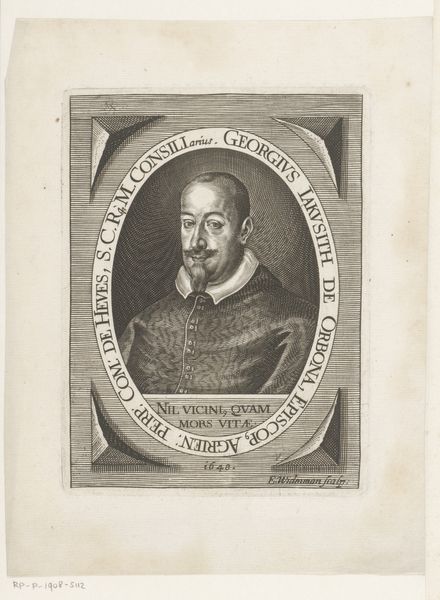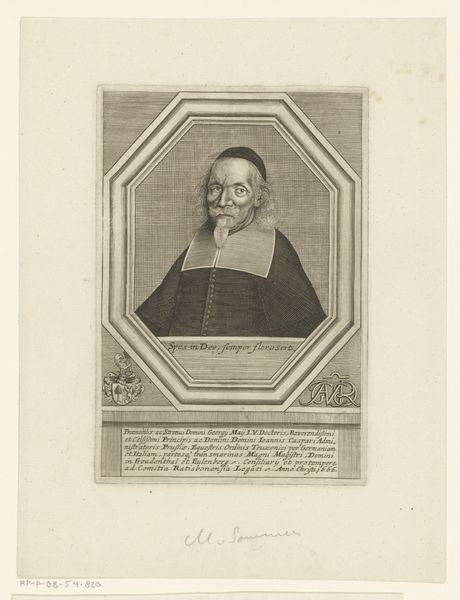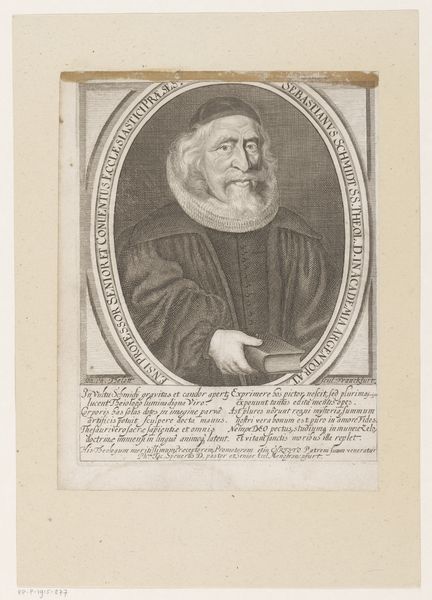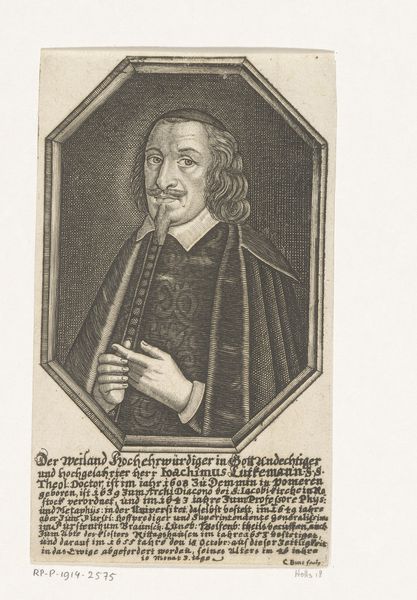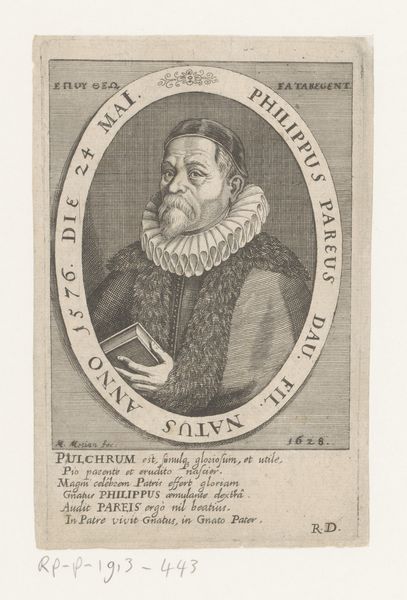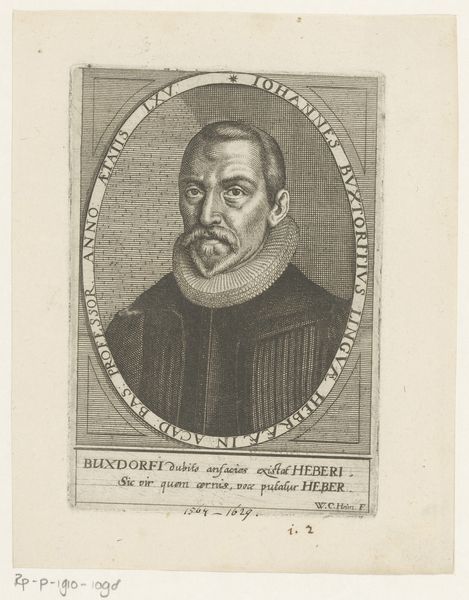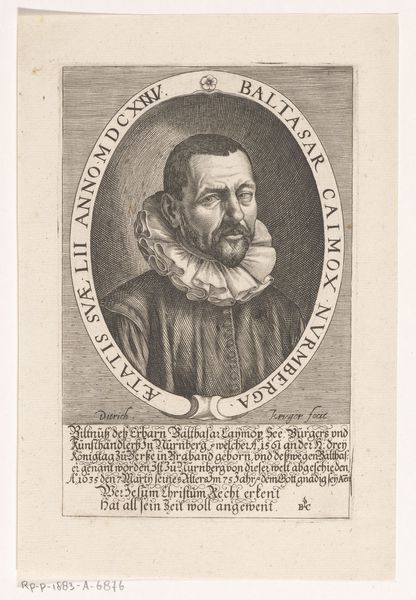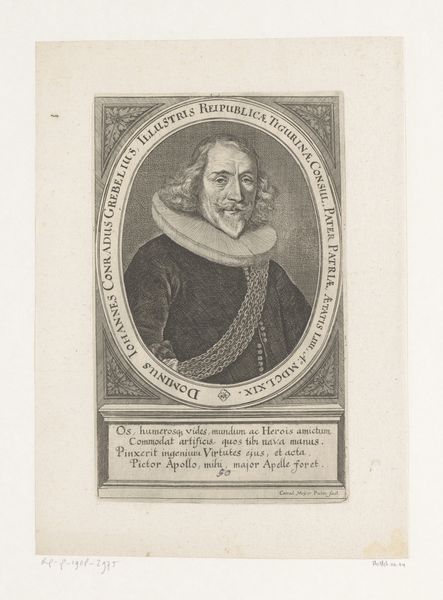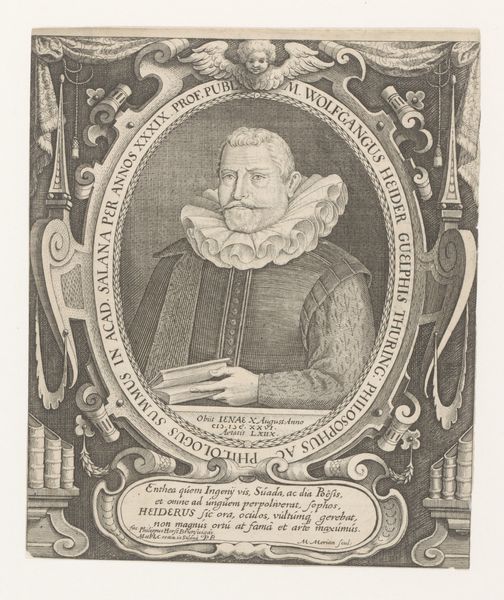
print, engraving
#
portrait
#
baroque
# print
#
engraving
#
realism
Dimensions: height 146 mm, width 101 mm
Copyright: Rijks Museum: Open Domain
Curator: Looking at this Baroque engraving, one immediately picks up on its formal and somewhat austere mood. The fine lines capture incredible detail, especially in the subject's face. What are your initial thoughts? Editor: The engraving, executed in 1652, depicts "Portret van Jacques Godefroy" by Matthias van Sommer, presenting us with the sober countenance of what was probably a leading figure of the period. The subject, framed within an oval border and surrounded by Latin inscriptions, offers insight into the humanist ideals of the time, yet seems confined, constrained. Curator: The containment within the oval surely reflects the symbolic idea of capturing and preserving a person's essence. Portraits often aim to immortalize the subject, turning them into icons. Does Godefroy's image convey any specific status or achievement? Editor: Indeed, the engraving served a specific political and social function. Godefroy, given the era, and that fact that the piece included Latin verses probably was part of the republic of letters or was related to a legal or administrative branch. Prints like these disseminated images of prominent figures, creating a visual record and reinforcing their authority. We are dealing with image-making as nation-making here, to a degree. Curator: Interesting perspective. I notice how the eyes, deeply set, engage the viewer directly. Perhaps this visual engagement aimed to assert psychological control, connecting with the viewer on a deeper level. Does the portrait remind us of familiar symbolic compositions? Editor: The sharp lines, and somewhat severe countenance remind us how different historical notions of ideal beauty or strength were from ours, shaped by entirely other contexts. One can appreciate the way that museums attempt to create bridges across centuries, inviting the viewer to analyze context and imagine historical subjects from their current standpoint. Curator: It is really difficult, though. That is also why understanding those portraits are helpful today, letting us reconstruct part of history that's frequently underrepresented: human life in detail, far from victorious military ventures. What we see here are details that tell of daily existence. Editor: I concur. Appreciating this print requires considering its role within the larger network of political imagery during the Baroque era, a fascinating insight into power dynamics and visual representation. Curator: Precisely. Thinking about art and its cultural implications has given me new insight into not only historical context, but how enduring is the drive to capture an likeness.
Comments
No comments
Be the first to comment and join the conversation on the ultimate creative platform.
